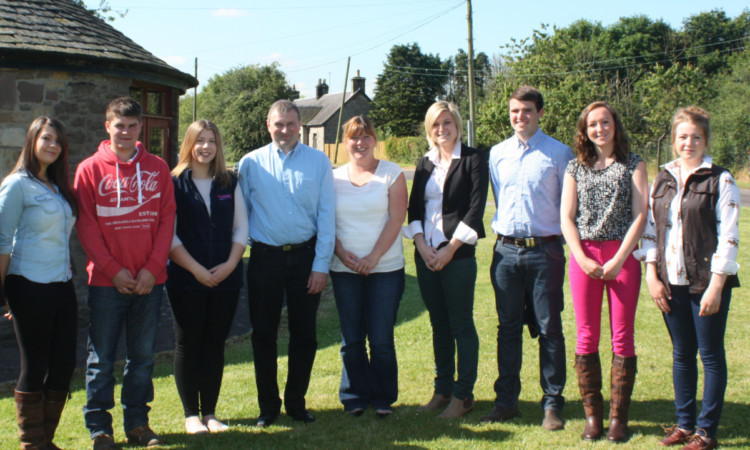A joint initiative involving the Scottish National Fatstock Club, meat processor Scotbeef and retailer Marks & Spencer took a step forward this week with a group of young farmers being given a unique opportunity to “walk the chain”.
Starting in the Scotbeef abattoir at Bridge of Allan, the group then visited the company’s cutting and packing plant at Queenslie in Glasgow before finishing the day at Marks & Spencer’s Braehead store.
“The young famers had all taken part in the SNFSC competitions centred on the National Meat Competition last November and entered either cattle or sheep for judging live and as carcases in the inaugural young producers section,” said Laura Barwick, liaison manager with Scotbeef.
“The overall winners in the beef and sheep sections were Isla King from Crossrigs, Hutton, Berwickshire, and Craig Bell, Craigo, Milnathort.
“Their prize was a trip to Eurotier in Hanover this November, but we wanted all 36 contestants to have the chance to see the whole meat chain from abattoir to retail shelf.”
Ian Galloway, chairman of Scotbeef, added: “In today’s market everyone has to work closer together and understand each other’s business. It is all about making sure the customer gets what he or she wants.
“Each part of the meat chain wants to see a premium, but at the end of the day only the consumer decides if that premium is justified. And remember, that consumer is more discerning now than ever.
“When I started in the business a butcher would prepare about 10 lines from a carcase. Today when you visit Queenslie you will see 170 different products being prepared and packed.”
Anna Playfair-Hannay, agricultural technologist with Marks & Spencer, said: “Consumers are definitely looking for quality in beef and lamb, and if they have a bad experience they will quickly turn to another protein.
“It is a hugely competitive retail environment with the emergence of the ‘nomadic consumer’ willing to move from store to store looking for the best quality and value.”
Welcoming the young producers, she pointed out that 60,000 new entrants would be needed across the UK in the next decade and that it would be very important for them to understand what the processor and retailer needed in terms of carcase specification.
SNFSC chief steward Alan Turnbull, Meadowend, Clackmannan, made the same point on new entrants.
“This is something we need to think about now and not later,” he said.
“The young producers classes are restricted to those aged between 18 and 26, and anyone thinking of entering the 2014 competition would need to be looking for suitable animals now and planning ahead.”
The six who took part in this week’s tour were Isla Begg, Upper Criggie, Stonehaven; Erica Mathers, Tormiston, Stenness, Orkney; Matthew Steel, Craignathro, Forfar; Hilary Bennie, Southfield, Stirling, Sarah-Jane Urquhart, Pirnhall, Stirling; and Layton Paul, Newbigging, Carnock.
During the Bridge of Allan visit the group saw the whole process from the point of slaughter through the boning and cutting hall to the dispatch bay.
The plant the largest in Scotland is processing 400 cattle a day, with a sheep line also fully utilised.
On the beef line, assistant factory manager Karol Wojcik explained the critical points in ensuring quality including swift and humane slaughter, carcase cleanliness, electric stimulation of the carcases, and properly controlled maturation.
He also pointed to the robust traceability procedures which followed every carcase through the whole process.
During the day the group were able to follow this traceability right through the packing process to the retail shelves.
In the case of cattle the identity is that of the individual animal, whereas in lamb a batch identity relating to the farm is used.
Matthew Steel who is an SRUC student at Craibstone, as well as helping on the family farm at Craignathro said he found the day fascinating, particularly the emphasis on providing consumer satisfaction.
“The scale of the Queenslie plant was really impressive and it was very interesting to see how many lines were being processed and how quickly it was all done.
“The Marks & Spencer store visit proved how important it is to present the meat properly, and it was good to see how little wastage there was,” he said.
Matthew added that he was currently on the lookout for his entries for this year’s Young Producers competition.
